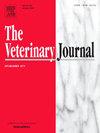小品种犬牙齿吸收的患病率和分类:一项使用全口口内x线片的回顾性研究
IF 3.1
2区 农林科学
Q1 VETERINARY SCIENCES
引用次数: 0
摘要
牙齿吸收(TR)是犬临床重要的牙齿状况;然而,尽管其对生活质量有影响,但其分类和流行程度,特别是在小型品种中,仍未得到充分研究。本回顾性研究旨在评估和分类小品种犬的TR类型,并探讨TR与性别、颅骨类型、体重、缺牙数量、TR类型、品种和年龄等因素之间的关系。在这项研究中,研究人员对248只体重小于15 公斤的狗进行了为期三年的牙科x光检查。统计分析研究变量与TR之间的关系。最常见的吸收类型是外部替代吸收(ERR),其次是外部炎症吸收(EIR)。年龄、缺牙数和总TR之间存在显著相关性(p <; 0.01)。此外,ERR和EIR的患病率随年龄增加而增加(p <; 0.01)。前磨牙的TR率明显高于门牙、犬齿和磨牙(p <; 0.001)。马尔他犬的TR患病率(p <; 0.05)显著高于其他犬种,尤其是ERR患病率(p <; 0.05)。9-11岁、12-15岁和15岁以上犬的TR率显著升高。考虑到老年小品种犬(尤其是前磨牙犬和马尔他犬)中TR的高发率,临床医生在拔牙时应谨慎。建议进行彻底的放射学评估,以准确评估吸收的程度,特别是在老年狗和易感品种中。本文章由计算机程序翻译,如有差异,请以英文原文为准。
Prevalence and classification of tooth resorption in small-breed dogs: A retrospective study using full-mouth intraoral radiographs
Tooth resorption (TR) is a clinically significant dental condition in dogs; however, its classification and prevalence, particularly in small breeds, remain understudied despite its impact on quality of life. This retrospective study aimed to assess and classify the types of TR in small-breed dogs and investigate associations between TR and factors such as sex, skull type, body weight, number of missing teeth, TR type, breed, and age. Dental radiographs of 248 dogs weighing less than 15 kg, examined over a three-year period, were included in this study. Statistical analyses were performed to investigate the associations between the examined variables and TR. The most common type of resorption was external replacement resorption (ERR), followed by external inflammatory resorption (EIR). Significant associations were found among age, number of missing teeth, and total TR (p < 0.01). In addition, the prevalence of ERR and EIR increased with age (p < 0.01). The rate of TR was significantly higher in premolars than in incisors, canines, and molars (p < 0.001). Maltese dogs showed a significantly higher prevalence of TR (p < 0.05), particularly ERR (p < 0.05), than other breeds. The TR rate increased significantly in dogs aged 9–11 years, 12–15 years, and over 15 years. Given the high prevalence of TR in older small-breed dogs, particularly in premolars and breeds such as Maltese, clinicians should exercise caution during tooth extraction. Thorough radiographic evaluation is recommended to accurately assess the extent of resorption, especially in older dogs and predisposed breeds.
求助全文
通过发布文献求助,成功后即可免费获取论文全文。
去求助
来源期刊

Veterinary journal
农林科学-兽医学
CiteScore
4.10
自引率
4.50%
发文量
79
审稿时长
40 days
期刊介绍:
The Veterinary Journal (established 1875) publishes worldwide contributions on all aspects of veterinary science and its related subjects. It provides regular book reviews and a short communications section. The journal regularly commissions topical reviews and commentaries on features of major importance. Research areas include infectious diseases, applied biochemistry, parasitology, endocrinology, microbiology, immunology, pathology, pharmacology, physiology, molecular biology, immunogenetics, surgery, ophthalmology, dermatology and oncology.
 求助内容:
求助内容: 应助结果提醒方式:
应助结果提醒方式:


